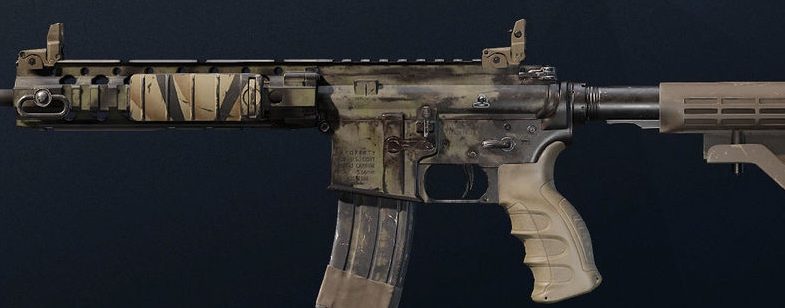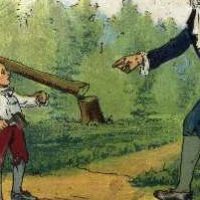Bang Bang Bang
That phrase, familiar since childhood for most, hadn’t even entered into the collective lexicon until the advent of the repeating firearm and, most likely, not until revolvers became common place. Up until then it was just ‘bang’. This was so ingrained, that one pistol or rifle or whatever, fired one shot, that Indians of the Old West relied upon that advantage to chase away pesky white people. Cause some noise, jump around, fire some arrows, then wait for your prospect to get jittery and fire off his shot. Then move in before reloading could be completed. In 1844, a group of Comanche Indians got a big surprise when they used this tactic on a group of Texas Rangers, one of the first posses to carry the new Paterson Revolvers on the frontier. When their initial shots were fired off, the Comanches moved in only to discover the rangers kept shooting. Things did not go well for them from there.
Bang Bang Bang
Eventually, the plains Indians began to adopt these weapons themselves, most famously at the Battle of the Little Bighorn. There, the Lakota’s main weapon was their numbers – some accounts stating that they outnumbered Custer’s men four to one, mostly armed with bow and arrow. Custer might have prevailed if he had more firepower, perhaps in the form of the new Gatling gun. Although he had shown himself willing to slaughter women and children, Custer strangely thought the use of such a rapid fire cannon to be dishonorable. In the end, his dead soldiers provided many of the Indians with their first rifles.
Bang Bang Bang
While Custer may have turned his nose up at the idea of a continuously firing weapon, Hiram Maxim did not. When in Paris an associate told him, “If you want to make a lot of money, invent something that will enable these Europeans to cut each other’s throats with greater facility.” He immediately began work on the world’s first true machine gun and demonstrated a portable model to the British army in 1885. However, the culmination of this early work was done by John Moses Browning, who designed (among many others) the Browning Automatic Rifle, capable of being fired by a single infantryman, delivering its powerful .30-06 rounds at a maximum speed of 10 rounds per second. Although ideal for the trench warfare of World War I, the BAR saw limited deployment due to the fact that the United States government didn’t want it to fall into enemy hands. But it couldn’t change the fact that Bang Bang Bang had changed into something else.
Rat Tat Tat
By refusing to deploy the BAR and its smaller cousin, the Thompson, the United States was left with a massive surplus of both types of guns, which were stockpiled in various National Guard armories throughout the country. Sitting idle, many of these were sold to the black market, ending up fueling the violence of Prohibition during the Great Depression. Famous gangsters and outlaws such as Machine Gun Kelly and Baby Face Nelson outgunned lawmen with their Tommys, but one man took it over the top: Clyde Barrow was famous for his skill with the BAR, a weapon so powerful it was renowned for shooting through car doors, through the people inside and then out the car’s other side. Clyde kept himself constantly stocked with the automatic rifle by stealing from National Guard armories, then using the rifles to commit robberies and kill lawmen. Until, that is, Texas Ranger Frank Hamer orchestrated an ambush of Clyde and his paramour Bonnie, using the same BAR type weapon of which Clyde was so fond. It’s estimated that 130 shots went through Bonnie & Clyde in their car on that fateful day, and then through the tree outside.
Rat Tat Tat
Both the BAR and the Thompson shipped out for World War II, having proven themselves time and again on America’s criminal killing fields. The Thompson submachine gun became extremely prevalent, not dissimilar to the AK-47 today. Reliable and accurate, the gun was carried by American, British, Canadian, Australian and even Chinese forces during the conflict. Both the Swedish and the Soviets copied the design to make their own versions. But a couple of good guns weren’t enough to end a conflict as large and monstrous as that one. Everyone was racing for that next evolution, the next step of the Bang Bang Bang to the Rat Tat Tat. The United States found it first, used it to reach out and touch the Japanese with a light so bright, dirty and destructive that they didn’t believe the U.S. could do it again. So the Fat Man fell on Nagasaki and the Japanese surrendered, knowing their enemy had found that next evolution.
Boom
But having that evolution in your hands doesn’t guarantee victory. The weapon was so terrible that Eisenhower refused its deployment during the Korean War, choosing instead to fight the war to a stalemate. While this held as well in the Vietnam War, somehow something got away from the U.S. and in chasing it it dropped over 7 million tons of ordinance, enough to amount to 1,000 lbs for every man, woman, and child in Vietnam. Over the course of two wars, the States seemed intent on proving that having the biggest and best weapons didn’t guarantee winning, but that you could lose the war because of the way you deployed them.
Boom
The massive collateral damage from the Vietnam War pushed the evolution to its next incarnation, the powers that be focusing on smart bombs; weapons that could strike accurately within 8 meters of a designated target. Whereas before you dropped it from a great height and relied on the massive detonation to do the work. But to call it a smart bomb is almost a misnomer, because the bomb is only one component. The bomb is equipped with special sensors, that plug it into the airplane that dropped it, that plug it into the soldiers on the ground that designate the target with a laser, or plug into a satellite flying high above in orbit, spitting out global positioning information that tells it where to go. From the ground to the sky, we’ve cocooned the world in a blanket of information that helps us kill each other with greater facility, creating something that Maxim could never have imagined when speaking to his old friend in Paris.
Boom
So what’s the next evolution? The Department of Homeland Security is working on a way of inducing seizures a la Pokemon’s colored and flickering lights. Israel is working on guns that shoot bullets around corners. Russia is working on something ominously called a vacuum bomb.
My name is Matthew McLean and I’ve been thinking about guns a lot lately.
See the author’s published work here.
Related Posts
The American: Chapter 14 Next Post:
The American: Chapter 15
























